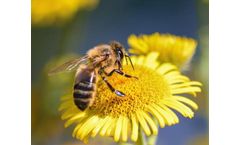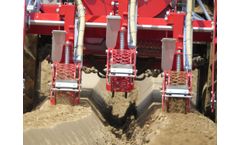Vegetable Seed Articles & Analysis
8 articles found
Approximately 75% of the world’s crops depend, to some degree, on pollinators to provide high yields of good quality fruits, vegetables, nuts, seeds, and oils. In history, farms had no concerns about pollination thanks to high populations of pollinating insects such as bees in natural abundance. However, due to the increased population demanding more crops, ...
Since its establishment, the Company has executed and completed a wide array of projects in diverse climatic zones all over the world, under varying economic and socioeconomic conditions. Soli has gained extensive experience in setting up turnkey greenhouse projects (for more details, please refer to Greenhouses on our Products page.) Soli specializes in the planning and execution of integrated ...
Precise seeding is the key to production of high-quality crops. MAX PNEUMATIC seed drills are modern machines for seeding of various vegetable species, being differently formed and sized. ...
As defined in Article 1, Title I of EC Regulation 834/2007, products included in the area of application of the above-mentioned regulations are: live or unprocessed agricultural products, processed agricultural products for use as food,feed, vegetative propagating material and seeds for cultivation. Bi-On pellets cannot be directly included in any of ...
Amongst the plants tested were fruits and vegetable pulps, leaves and seeds (like jackfruit, tamarind, papaya, orange, watermelon, pineapple, cucumber, green gram, peas, black gram, cluster bean rice, maize, chili, cabbage, mustard, cauliflower, beetroot and carrot). ...
Two methods, burning and glyphosate application, were used to control existing vegetation before seeding annual forages. Three levels of N (0, 50, and 100 kg ha–1) were applied to each sequence of crops on two occasions for a total of 0, 100, and 200 kg ha–1 yr–1. ...
Allowing the pasture to remain ungrazed may allow weedy species to produce seeds, and could reduce legume populations. We measured the seed bank composition (n = 23) and aboveground vegetation (n = 32) in paddocks that had been fallowed from 0–6 yr previously on an organic dairy in Maryland. ...
As protein comprises on average more than 400 g kg–1 of the soybean seed, yields in northern latitudes may be limited by seed protein accrual. Our objective was to examine the role of canopy N reserves at maximum vegetative growth (R5.5) on seed yield, and seed protein, oil, and sulfur concentrations in the upper ...






